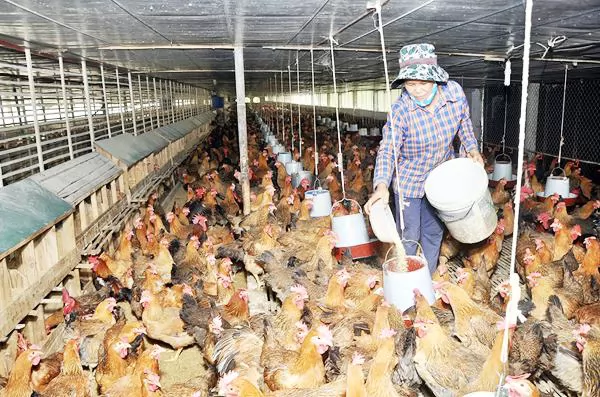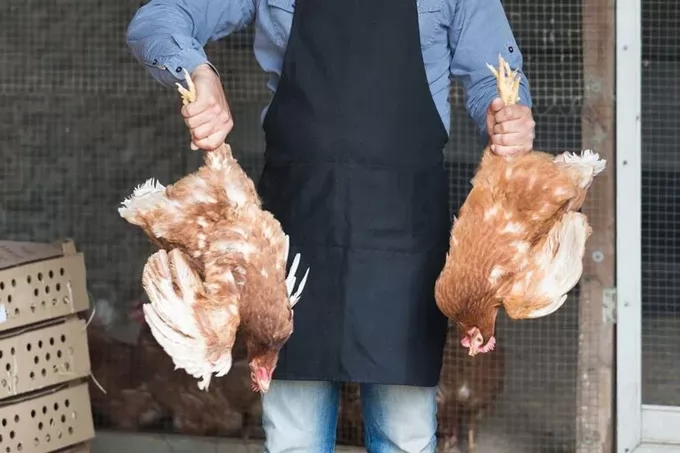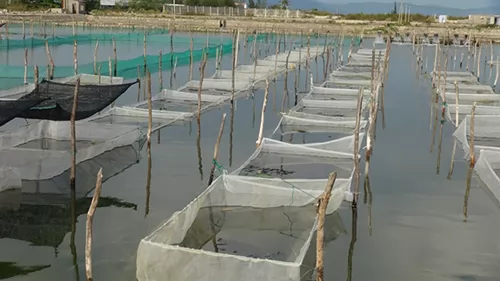Shrimp industry is expected to earn more US$ 4 billion

In 2024, shrimp exports are expected to improve and increase slightly by 10-15% compared to 2023, expected to earn more than US$ 4 billion. Photo: Le Hoang Vu.
(VAN) Department of Fisheries (Ministry of Agriculture and Rural Development) in conjunction with Directorate of Fisheries, organized a forum on solutions to develop Vietnam's shrimp industry in a sustainable manner.
For many years, shrimp has been the mainstay of the seafood industry, annually bringing the country nearly US$ 4 billion and contributing about 45-50% of the total seafood export value. Vietnam is one of the countries that produces a lot of shrimp and is in the top 4 in the world, along with Ecuador, India, and Indonesia.
In 2023, the country's brackish water shrimp farming area will reach 737 thousand hectares, with an output of about 1.12 million tons. Notably, although the basic farming area has not increased, total shrimp production has increased by 5.5% compared to 2022. However, difficulties caused shrimp export turnover in 2023 to decline, only reaching US$ 3.45 billion, down 19.8% compared to 2022.
In 2024, the difficulties and challenges of the shrimp industry will not end. However, this will probably only happen in the short term because the shrimp industry's development forecast is still very positive, especially from the second half of this year. Shrimp exports are also expected to improve and increase slightly by 10-15% compared to 2023, and they are expected to earn more than US$ 4 billion.

The shrimp industry must accompany each other and share to create strength in the shrimp farming industry. Photo: Le Hoang Vu.
Currently, domestic commercial shrimp prices have improved. However, the shrimp industry still faces many difficulties due to unusual weather conditions, input prices are still anchored at high levels, and the risk of The potential for epidemics is huge. Simultaneously, inflation in many countries has decreased, but not significantly, and logistics costs are still significant, especially the tense situation in the Red Sea region. While market signals, although bright, are not sure, farmers are still cautious in reproduction.
To overcome immediate challenges and sustainably develop this vital industry, the government has directed relevant ministries, branches, and localities to find solutions to revive the situation quickly and make the most of every opportunity, determined to accompany shrimp farmers to overcome current obstacles and stabilize production.
Mr. Tran Dinh Luan, Director of the Directorate of Fisheries (Ministry of Agriculture and Rural Development), said: For the seafood sector, the country's primary export industry must start early with solutions and initiatives, Helps improve the quality and brand reputation of Vietnamese seafood as green seafood.
The Director of the Department of Fisheries hopes that the shrimp industry must accompany each other, go together among participants, and share to create strength in the shrimp farming industry.
Currently, the potential for circular economy in the seafood sector is huge, including by-products from shrimp. Handling the problem well, reducing emissions, and increasing value for shrimp farmers is significant. However, collecting by-products from shrimp in large quantities is still tricky, and farmers have been unable to do it. Therefore, changing the awareness of shrimp farmers to organize the collection of peeled shrimp shells during the farming process and supply them to processing factories is very necessary.

The potential for circular economy in the seafood sector is huge, including by-products from shrimp. Photo: Le Hoang Vu.
Mr. Nguyen Hoa Cuong, Deputy Director of the Central Institute for Economic Management (Ministry of Planning and Investment), shared: The circular economic potential in fisheries is enormous.
According to statistics, the total volume of by-products in the country in 2020 was about 156.8 million tons, of which about 1 million tons come from the fisheries industry. The Mekong Delta region alone accounted for 39.4 million tons. The Southeast region accounted for 13.9 million tons. Kien Giang (the largest in the Mekong Delta) had 5.7 million tons/year, and An Giang accounted for 5.2 million tons/year. The rate of collection of aquatic by-products is 90%. Processing seafood by-products was approximately US$ 275 million in 2020. Meanwhile, if fully exploited with high technology, it can earn US$ 4-5 billion as raw materials for the cosmetic, pharmaceutical, and medical industries, and agriculture, especially the production of feed ingredients for livestock.
Talking about the benefits of natural organic shrimp farming that will bring sustainable results in the Mekong Delta, Mr. Le Quang Huy, Deputy General Director of the Shrimp Breeding, Shrimp Farming, and Biotechnology Department of Minh Phu Group shared; currently, the Group has proposed a solution to use BIO for organic shrimp farming based on beneficial bacteria that help decompose organic matter and fiber into biological food for shrimp to help increase production in the farming season.
Photosynthetic microorganisms will help shrimp absorb and metabolize toxic gases without causing a greenhouse effect. The actual results achieved have contributed to limiting the use of water treatment chemicals. Taking advantage of waste from shrimp farming has served the farming sectors, thereby helping to reduce the cost of shrimp farming.
Author: Le Hoang Vu
Translated by Tuan Huy
Maybe you are interested

Animal feed prices rise sharply, farmers hit hard
HCM CITY - The price of livestock fodder has risen by 15-30 per cent in the last five months because of higher prices of inputs, and many farmers are facing big losses as a result.

Dilution of poultry welfare standards in the UK criticised by campaigners
The Animal Welfare Committee proposal is for the European legislation to be amended for a period of 5 years so 'it is legally permitted to lift chickens and turkeys weighing less than 10kg,by 2 legs'.

New sandfish farming model to be replicated
KHÁNH HÒA — The south-central coastal province of Khánh Hòa has successfully farmed sandfish with other aquatic species under a new model developed by the Research Institute for Aquaculture No 3 under the Ministry of Agriculture and Rural Development.





